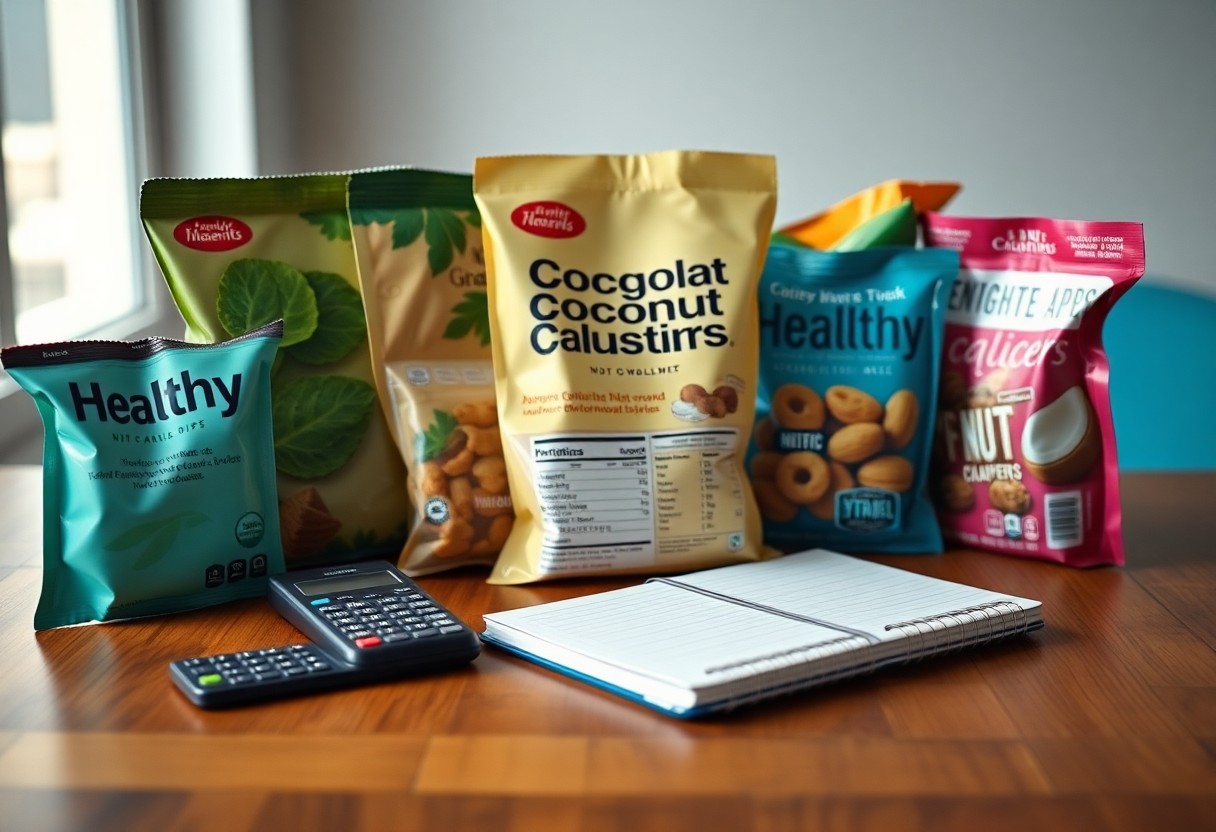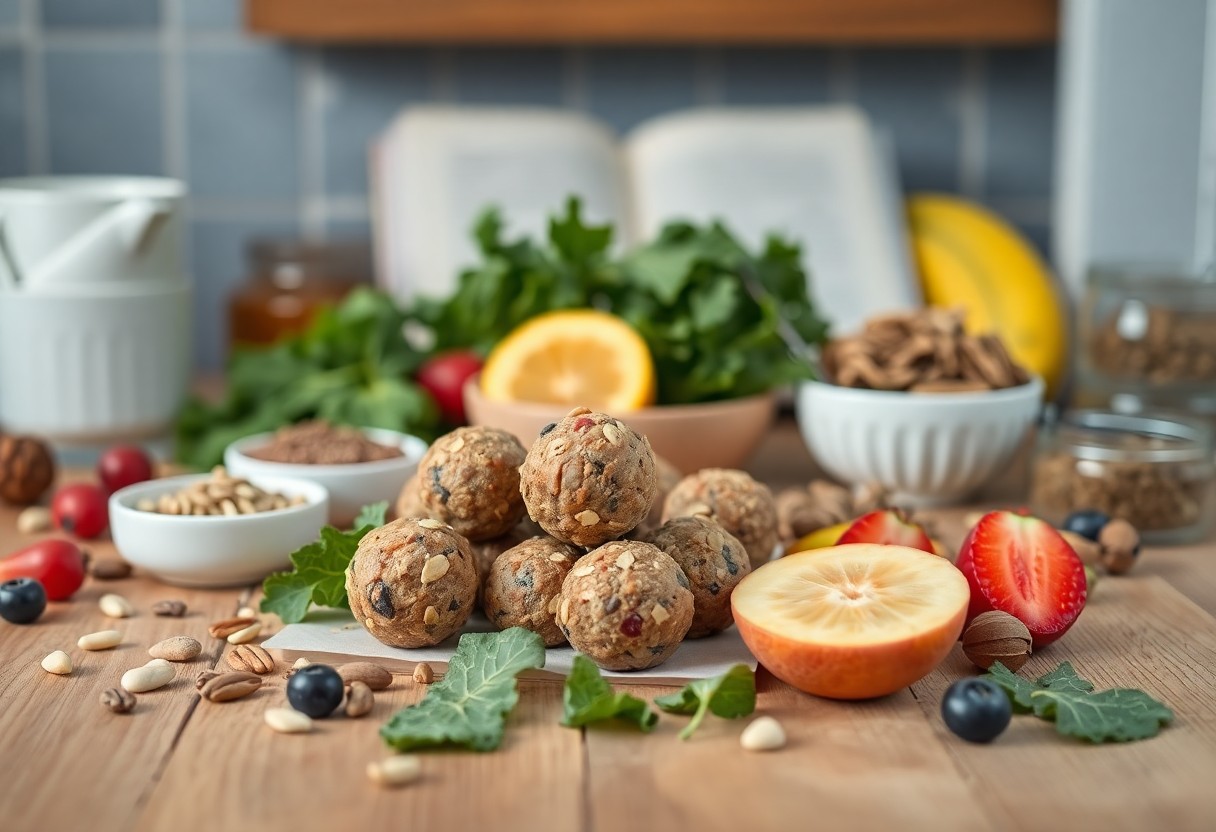With the vast array of options claiming to be “healthy,” you may find it challenging to know what truly benefits your health. Many snacks marketed as nutritious often contain hidden sugars, unhealthy fats, and excessive sodium, making them less than ideal choices. On the other hand, some snacks might surprise you with their wholesome ingredients and genuine health benefits. Understanding how to decode labels and identify misleading marketing tactics can empower you to make informed decisions for your well-being.
Understanding Marketing Terms
Deciphering marketing terms can often lead to confusion about what constitutes a truly healthy snack. Labels are designed to catch your attention, but they frequently use complex phrases that can mislead you. Terms like “wholesome,” “nutritious,” or “made with whole grains” don’t necessarily guarantee that a product is devoid of unhealthy ingredients. You need to look beyond these buzzwords to identify what’s genuinely beneficial for your diet.
Natural vs. Organic
The term “natural” is often advertised on snack packages, yet it lacks a strict definition and can be misleading. A product labeled as natural may still contain artificial ingredients, preservatives, or added sugars. In contrast, “organic” products are certified to be free from synthetic additives, pesticides, and genetically modified organisms. Choosing organic wherever possible ensures a cleaner option for your health.
Low-Fat and Fat-Free Claims
Products marketed as low-fat or fat-free can mislead you into thinking they are healthier choices. Often, these snacks compensate for the reduced fat with added sugars to maintain flavor, which may negate any health benefits you expect from cutting fat. Examining the ingredient list and nutrition facts is vital to understand what you are consuming.
Many low-fat and fat-free items also contain high levels of carbohydrates or artificial sweeteners. For instance, a popular fat-free yogurt might have as much as 20 grams of sugar per serving, making it less healthy than its full-fat counterpart with lower sugar levels. This deceptive marketing can obscure the actual nutritional value, leading you to make choices that aren’t as beneficial as you presumed.

Nutritional Labels Decoded
Navigating nutritional labels can be daunting, especially with deceptive marketing tactics employed by many brands. Understanding these labels is imperative for making informed choices about your snacks. Look beyond catchy phrases like “low-fat” and “natural.” Focus on total calories, sugar content, and protein to assess whether a product truly provides The Benefits to Healthy Snacks.
Serving Sizes and Portions
Serving sizes often mislead you concerning how much you’re eating. A small snack bag may contain multiple servings, so what seems healthy can quickly turn into a calorie bomb. Always check the serving size indicated on the label, and adjust your expectations accordingly to ensure you stay within your dietary goals.
Understanding Ingredients
Ingredient lists can offer insights into the quality of a snack’s nutritional profile. Ingredients are arranged by weight, meaning the first few items are present in the highest quantities. Look for whole foods like nuts, fruits, or grains at the top of the list. Ingredients such as added sugars, artificial flavors, and preservatives should raise red flags about a snack’s overall health value.
Diving deeper into ingredient understanding allows you to distinguish between genuinely healthy snacks and those that are merely marketed as such. For instance, a snack labeled “organic” may still contain high levels of sugar or unhealthy fats if the first ingredients are sweeteners or refined oils. Whole food ingredients should dominate the list, and they should minimally processed. Familiarize yourself with terms like “organic,” “natural,” and “fortified” to appraise snacks effectively, ensuring your choices align with your health objectives.
Common Misleading Snacks
Many snacks marketed as “healthy” are often misleading. Labels like “natural,” “low-fat,” or “organic” may suggest nutritional value, but they can mask high sugar content or unhealthy additives. You’re better off scrutinizing ingredient lists and understanding that not all “health” claims equate to real nourishment. For Supermarket Shopping Tips – How to Pick Healthy Foods, focus on whole food ingredients over clever marketing tactics.
Granola Bars
Granola bars often appear to be a wholesome choice, yet many contain artificial sweeteners and refined sugars. Even brands touting health benefits might have ingredients that transform a seemingly nutritious snack into a sugary treat, sometimes exceeding 10 grams of sugar per serving. Always check for whole grains and minimal added sugars.
Trail Mixes
Trail mixes can offer a nutritious snack option, but not all blends are created equal. Many commercial trail mixes are loaded with added sugars and unhealthy fats due to the inclusion of chocolate, sugary dried fruits, and excessive nuts. Opt for ones with diverse dry fruits and nuts for healthy fats and natural sweetness while being cautious of portions, as calorie counts can quickly add up.
Creating your own trail mix allows you to control the ingredients. Combine unsalted nuts, seeds, and a small amount of dark chocolate or unsweetened dried fruit for a balanced snack that gives you energy without the sugar spike. Homemade versions not only align better with your dietary goals but also offer a more satisfying crunch with each handful.
The Role of Added Sugars
Added sugars significantly impact the health profile of snacks, often increasing calorie counts without contributing imperative nutrients. Many “healthy” snacks contain these sugars, masked behind appealing flavors or branding. You might find sweeteners like high-fructose corn syrup and cane sugar, leading to excessive daily sugar intake, which can heighten the risk of obesity, diabetes, and heart disease.
Hidden Sugars in Labels
Even snacks that claim to be nutritious may contain hidden sugars lurking within ingredient lists. Terms like “agave nectar,” “fruit juice concentrate,” and “dextrose” often indicate added sugars. You should scrutinize the ingredients to determine the actual sugar content, as what appears healthy can sometimes be a sugar-laden choice in disguise.
Sugar Alternatives and Their Effects
Sugar alternatives have gained popularity in healthy snacks, offering sweetness without the calories of traditional sugar. However, these substitutes, like aspartame and stevia, can elicit mixed reactions from your body. While some may not contribute to weight gain, others have been linked to increased cravings for sugar, impacting your overall dietary choices.
Sugar alternatives can seem like a healthier option, but the reality is more complex. For example, research indicates that *aspartame* may mislead your brain into seeking sugar, leading to cravings and increased overall consumption. Similarly, while *stevia* offers fewer calories, some studies suggest it can alter gut health by affecting your microbiome. The emotional and physiological associations with sweetness can skew your perception, making you feel justified in choosing snacks labeled as “sugar-free,” yet opening the door to potential overconsumption of these products. Evaluating the long-term effects of sugar alternatives is imperative to ensure they are beneficial rather than misleading in your healthy snack journey.

Healthy Alternatives to Store-Bought Snacks
Exploring alternatives to store-bought snacks allows you to regain control over your diet and make healthier choices. Focus on creating options that are nutrient-dense, satisfying, and devoid of unnecessary additives. You can opt for homemade energy balls, roasted chickpeas, or yogurt parfaits loaded with fresh fruits and nuts, ensuring that every bite is both delicious and nourishing.
Making Your Own Snacks
Creating your own snacks gives you full control over the ingredients. Whipping up a batch of homemade granola bars or veggie chips means eliminating preservatives and added sugars often found in store-bought versions. With simple recipes using whole ingredients, you can customize flavors to suit your preferences while ensuring optimal nutrition.
Selecting Whole Foods
Whole foods are the cornerstone of a nutritious diet, providing important vitamins and minerals without added harmful ingredients. Stock your pantry with items like nuts, seeds, whole grains, fruits, and vegetables. By choosing these options, you not only avoid processed ingredients but also enhance your overall health and well-being with nutrient-rich foods that keep you energized.
Whole foods, such as raw nuts, fresh fruits, and unrefined grains, offer the highest nutritional value, packing in beneficial nutrients and fiber. For example, almonds are rich in vitamin E, while quinoa provides complete protein. These foods serve as excellent bases for snacks, whether enjoyed raw or as ingredients in recipes. As a rule of thumb, aim for snacks with minimal processing—look for items that contain one or two ingredients, which indicates fewer additives and higher nutrition. This simple shift can profoundly impact your energy levels and overall health.

Consumer Awareness and Education
Understanding what makes a snack truly healthy requires a deep examine label reading and nutritional knowledge. Many products marketed as “healthy” may contain hidden sugars, unhealthy fats, and high sodium levels. You’ll find that often, attractive packaging and buzzwords like “organic” or “low-fat” can mislead you into believing a product is nutritious when it’s not. Educating yourself about these misleading tactics will empower you to make better choices that truly benefit your health.
How to Read Labels Effectively
To make informed decisions, familiarize yourself with reading nutrition labels. Start by checking the serving size as it can skew calorie counts; many snacks contain multiple servings per package. Look for added sugars and saturated fats, which should be limited in your diet. Ingredients are listed in order of quantity, so reach for snacks where wholesome ingredients, like whole grains or nuts, appear first. It’s insightful to calculate nutrient density relative to calorie count, ensuring your snack is genuinely wholesome.
Importance of Nutritional Knowledge
A solid foundation in nutritional knowledge equips you to navigate the grocery aisles with confidence. Being aware of what constitutes a balanced diet helps you analyze products more critically. For instance, understanding how fiber contributes to satiety can lead you to choose snacks that keep you feeling full longer. Additionally, knowing the impact of various vitamins and minerals on your well-being allows you to prioritize nutrient-rich options that fuel your body efficiently.
In today’s market, a snack’s marketing often overshadows its nutritional value, making it challenging to discern which products are beneficial. For example, a snack may prominently feature “no artificial ingredients” but still be laden with refined carbohydrates that elevate blood sugar. Greater nutritional knowledge enables you to identify whole food ingredients that offer lasting health benefits over quick fixes. This awareness not only enhances your shopping experience but also fosters lasting healthy habits in your daily diet.
Summing up
To wrap up, you should critically evaluate the “healthy” snacks available at the grocery store. Not all products labeled as nutritious genuinely offer beneficial ingredients; many are cleverly marketed to mislead your choices. Focus on reading labels, assessing both nutritional content and ingredient lists, and prioritize whole foods when possible. By doing this, you can navigate the snack aisle more effectively and make decisions that truly align with your health goals.
FAQ
Q: What should I look for when choosing healthy snacks at the grocery store?
A: Look for snacks with whole food ingredients, high fiber content, and minimal added sugars. Check nutrition labels for lower sodium and avoid products with artificial additives.
Q: Are all granola bars considered healthy snacks?
A: Not all granola bars are healthy. Many are high in sugar and calories. Choose bars with whole grains, nuts, and seeds, and less than 10 grams of sugar per serving.
Q: Is it safe to trust health claims on packaging?
A: Health claims can be misleading. Look for third-party certifications and read ingredient lists rather than just relying on marketing terms like “organic” or “natural.”
Q: What role do portion sizes play in making healthy snack choices?
A: Portion sizes are important as they impact overall calorie intake. Even healthy snacks can contribute to weight gain if consumed in large quantities. Use serving size guidelines on packaging for reference.
Q: How can I identify hidden sugars in snack products?
A: Hidden sugars can appear under various names such as corn syrup, sucrose, or honey. Check for these in the ingredient list and aim for snacks that have little to no added sugars.